As spring blossoms throughout Europe, April offers a perfect blend of pleasant weather and fewer crowds, making it an ideal time for travel. Some of the best places to travel in Europe in April include Athens, Greece, for its rich history and vibrant culture and Portugal’s Algarve for its stunning beaches. The tulip fields of the Netherlands also come alive with color, providing a breathtaking sight for nature lovers.

Exploring charming cities can reveal hidden cultural gems and offer a taste of authentic local life. From the sun-kissed streets of Seville, Spain, to the historic charm of Dubrovnik, Croatia, each destination offers unique experiences, from ancient ruins to bustling local markets. April is also a time for exciting festivals, like the colorful Semana Santa in Spain, which showcases traditional celebrations and lively events.
Traveling in Europe during April allowed us to take advantage of pleasant prices and avoid peak season crowds. Whether you are seeking culinary delights, artistic museums, or picturesque landscapes, April presents outstanding opportunities. Take advantage of less crowded accommodations, and venture into popular spots or hidden treasures across the continent.
Key Takeaways
- April offers great weather and fewer crowds in Europe.
- Choose destinations that blend history, culture, and natural beauty.
- Take advantage of exciting events and affordable travel options.
Weather Considerations in April
April is a fantastic time to explore Europe. The weather varies from one country to another, so let’s take a closer look at the weather for the best places to travel in Europe in April.
Northern Europe
In Northern Europe, including cities like Stockholm and Helsinki, temperatures are usually cool. You can expect averages around 40°F (4°C) to 50°F (10°C). It’s a good idea to pack layers and a raincoat, as there’s a chance of rain.
Southern Europe
Southern Europe enjoys warmer weather. In places like Malta, the temperature averages 68°F (20°C). The sun shines more often, making it ideal for outdoor activities.
Central Europe
Germany and Austria typically experience mild weather in April. Temperatures range from 45°F (7°C) to 60°F (15°C). Though it’s mostly pleasant, you should be prepared for occasional showers.
Eastern Europe
In Eastern Europe, including countries like Hungary and Croatia, the temperatures are similar to central Europe. We often find ranges from 50°F (10°C) to 65°F (18°C). A light jacket and an umbrella will be handy.
By planning according to the weather, you can make the most of your European adventure in April. Checking the forecast before you leave will help you pack wisely and ensure a comfortable trip.
Top Destinations for Culture and History
Traveling through Europe in April opens the door to cities rich in culture and history. Rome, Paris, and Athens each offer distinct experiences from ancient ruins to renowned art museums.
Rome, Italy
The Eternal City, Rome, is a treasure trove of historical landmarks. The Colosseum, a symbol of Ancient Rome, stands mightily in the city center, offering a glimpse into Rome’s gladiatorial past. You can wander through the Roman Forum, which once was the heart of public life.
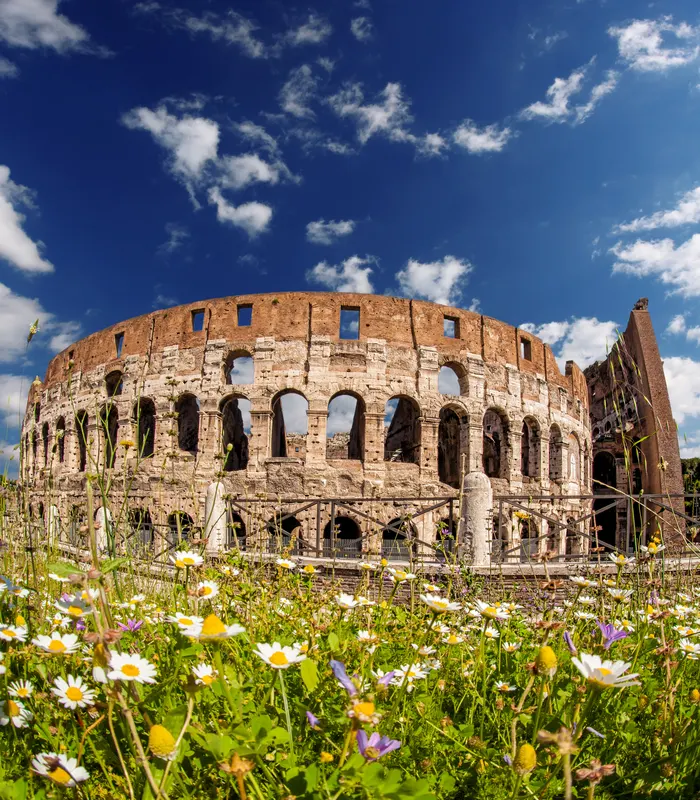
The Vatican City houses St. Peter’s Basilica and the Sistine Chapel, where Michelangelo’s famous ceiling beckoned us. You should stroll through charming neighborhoods like Trastevere, where old-world charm meets vibrant street life. The blend of Roman history and vibrant culture makes Rome a must-visit.
Paris, France
In Paris, we encountered a perfect mix of history and art. The Louvre Museum attracts visitors with masterpieces such as the Mona Lisa. You can explore the monumental Eiffel Tower, whose iconic presence defines Paris.

Notre-Dame Cathedral, which has recently reopened to the public, remains a symbol of gothic architecture and French heritage. Walking along the Seine, we found bookstalls and quaint shops that add to the city’s charm. Paris is also home to many renowned cafes and bistros, where we tasted French cuisine while soaking in the culture, making it truly one of the best places to visit in Europe in April.
Athens, Greece
Athens serves as a gateway to Greece’s ancient past. The Acropolis, perched on a rocky hill, is an awe-inspiring relic of classical Greece. At the heart of the site stands the Parthenon, showcasing stunning Doric architecture. We found ancient artifacts at the Acropolis Museum, providing further insight into Greek antiquity.
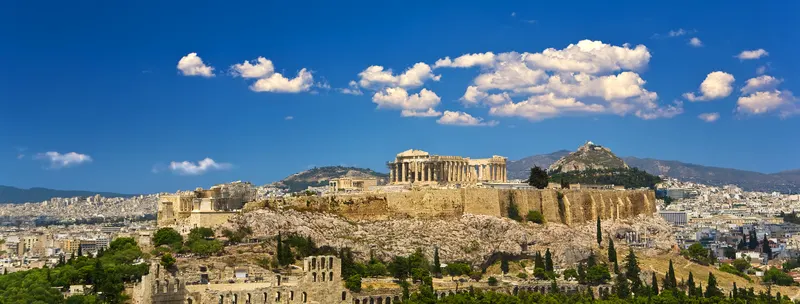
Plaka, Athens’ oldest neighborhood, offers a mix of vibrant shops and traditional tavernas. Strolling through its narrow alleys feels like a step back in time. Athens combines historical sites with a lively contemporary culture, making it an essential stop for history enthusiasts.
Best Places for Nature Lovers
April is a wonderful time to explore Europe’s diverse natural landscapes. From the rugged beauty of the Scottish Highlands to the breathtaking views of the Swiss Alps and the enchanting waterfalls of Croatia’s Plitvice Lakes, there’s something for every nature enthusiast.
The Scottish Highlands
The Scottish Highlands offer stunning and varied scenery that feels like stepping into a world of legends. Rolling green hills, dramatic coastlines, and ancient castles greeted us at every turn. Hiking is a popular activity here, with trails leading through unspoiled landscapes and offering views that stretch for miles.

Loch Ness, famously home to the Loch Ness Monster, is one of the many serene lochs in the area. There are also several charming villages where you can experience traditional Scottish culture. In April, the weather begins to warm, making it a perfect time for exploring the outdoors without the crowds. Wildlife enthusiasts will appreciate the opportunity to see red deer, golden eagles, and other native species in their natural habitat.
The Swiss Alps
The Swiss Alps are a true paradise for nature lovers, offering some of the most dramatic and breathtaking views in Europe. In April, the snow starts to melt, revealing lush green valleys beneath towering peaks. This is an optimal time for hiking and mountain biking along well-marked trails.
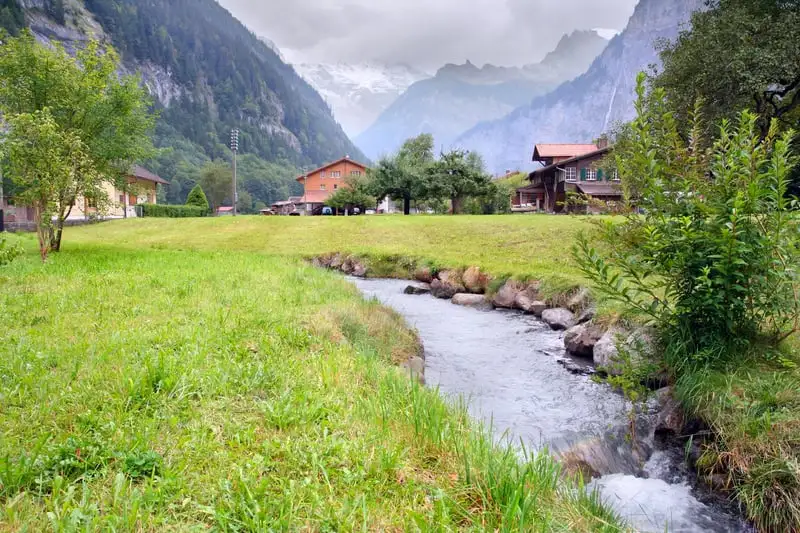
The iconic Matterhorn is a captivating sight, especially when illuminated by the sun. The region is also known for its charming alpine villages, where you can indulge in local Swiss cuisine. As spring unfolds, wildflowers begin to bloom, adding vibrant colors to the landscape. Whether you’re looking for adventure or simply wish to soak in the beauty, the Swiss Alps never disappoint.
Plitvice Lakes, Croatia
Plitvice Lakes National Park is renowned for its cascading lakes and striking waterfalls. This UNESCO World Heritage Site features a series of 16 terraced lakes, connected by waterfalls that range in color from azure to green.
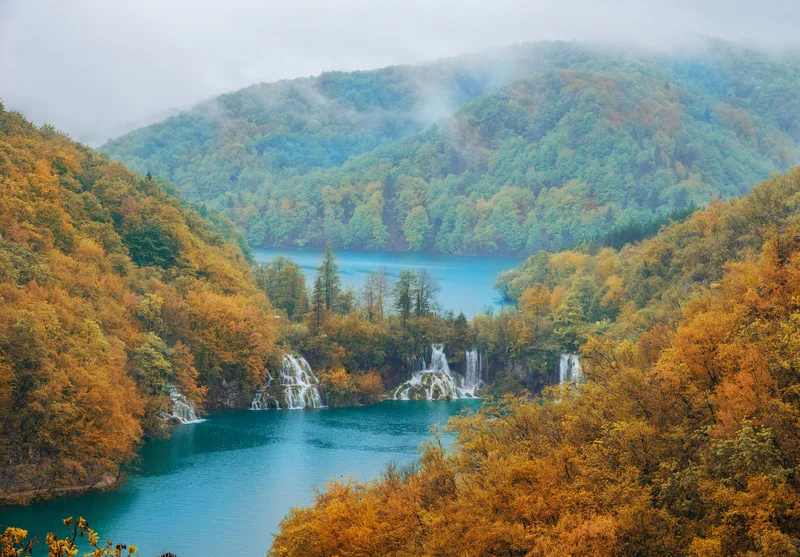
April is a great time to visit, as the park is less crowded compared to summer months, allowing you a more peaceful experience. Plitvice Lakes is definitely one of the best places to travel to Europe in April , as there are walking trails and bridges guide you through lush forests, where you can admire the rich biodiversity. The park is home to a variety of plants and wildlife, including bears and rare bird species. With its stunning natural beauty, Plitvice Lakes is a must-see for anyone passionate about nature.
Ideal Cities for Arts and Museums
April is a great time to explore some of Europe’s top cities rich in art and culture. With mild weather and fewer crowds, it’s perfect for visiting museums, galleries, and enjoying the vibrant art scenes.
Florence, Italy
Florence is a city that breathes art and history. It’s the birthplace of the Renaissance and offers countless treasures. The Uffizi Gallery, home to works by Botticelli and Michelangelo, stands out as a major attraction. The Accademia Gallery, where Michelangelo’s David captivates visitors, is also a must-see.

Additionally, the city’s architecture is a masterpiece in itself. You can immerse yourself in the stunning cathedrals and palaces that fill Florence. Not only is art abundant indoors, but the streets are filled with sculptures and artistic expressions that make a simple walk feel like an art tour.
Berlin, Germany
Berlin’s art scene is dynamic and diverse. It’s famed for its cutting-edge architecture and contemporary galleries. The Museum Island, a UNESCO World Heritage site, hosts five world-renowned museums. The Pergamon Museum, with its impressive collection of ancient artifacts like the Pergamon Altar, is a highlight.
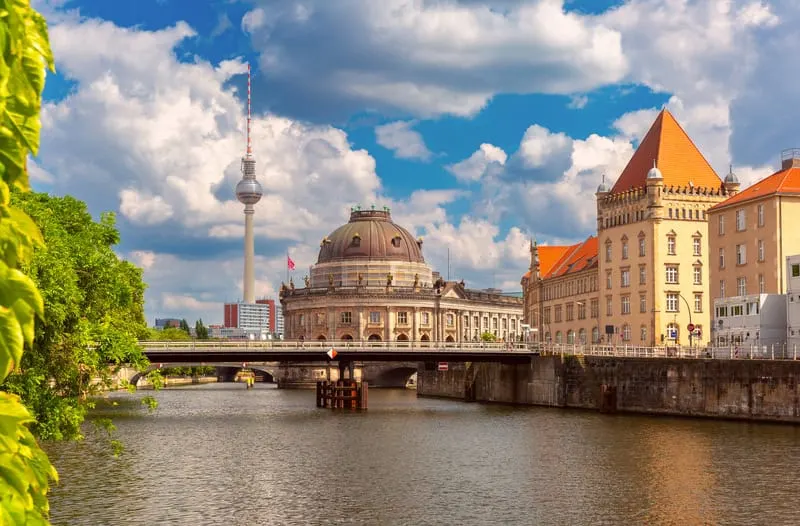
For those interested in modern art, the city’s street art scene offers vibrant and ever-changing artwork that reflects its progressive culture. Berlin’s alternative art spaces also provide fresh and innovative work, making art exploration exciting and unique every time.
Vienna, Austria
Vienna is synonymous with classical music, but its art museums are equally noteworthy. The Belvedere Museum houses an impressive collection of Austrian art, such as Klimt’s The Kiss. The Kunsthistorisches Museum offers a deep dive into art history, featuring works by masters like Rembrandt and Vermeer.
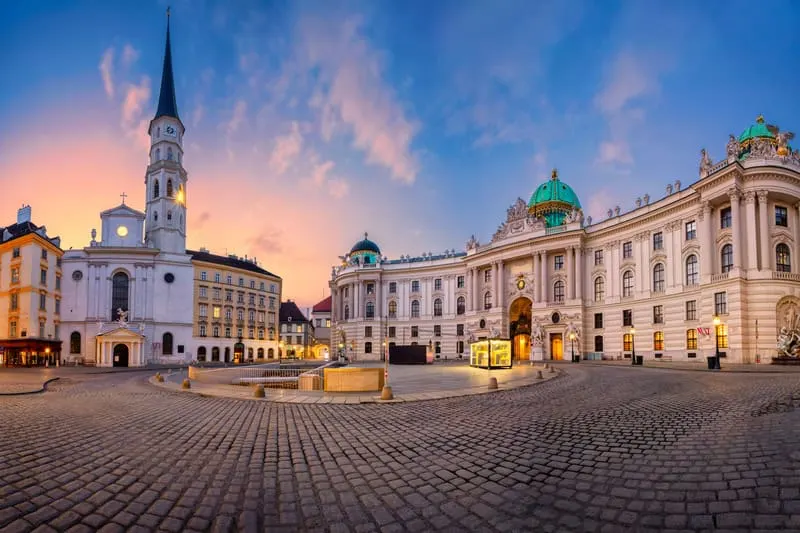
For contemporary art lovers, the MuseumsQuartier is the hotspot. This unique district brings together art, culture, and a lively atmosphere, with galleries and events happening throughout the year. We enjoyed the blend of traditional and modern art experiences that Vienna offers, making it a captivating city for art enthusiasts.
Festivals and Events in April
April is a vibrant month in Europe, filled with exciting festivals and cultural events. These special occasions offer a glimpse into the unique traditions and lively celebrations of each region. Here, you can explore three notable events that capture the essence of European culture in April.
King’s Day, Netherlands
King’s Day, celebrated on April 26, 2025 is one of the most festive days in the Netherlands. This national holiday, in honor of King Willem-Alexander’s birthday, turns the entire country into a sea of orange. People wear orange clothing and accessories as a tribute to the royal family, the House of Orange.

In Amsterdam, the atmosphere is especially lively with street markets, music performances, and boat parades along the canals. The city’s parks become vibrant spots for family picnics and children’s activities. Almost every street corner hosts lively parties, and visitors can enjoy a wide variety of Dutch treats. If you plan to experience King’s Day, be sure to join the festivities early, as the celebrations last from dawn until late in the evening.
Seville April Fair, Spain
The Seville April Fair, or Feria de Abril, is a week-long celebration held two weeks after Easter. It originally started as a cattle trading fair but has evolved into a vibrant display of Andalusian culture. The fairground, located on the outskirts of Seville, becomes a bustling scene filled with tents known as “casetas.”

Visitors can enjoy flamenco dancing, traditional Spanish music, and delicious tapas throughout the festival. Horse parades and traditional attire, such as flamenco dresses and riding costumes, add to the cultural experience. Each night, fireworks light up the sky, capping off the day’s festivities. This is a must-visit event for anyone interested in experiencing the heart of Spanish culture and tradition.
St George’s Day, England
St George’s Day, celebrated on April 23, is England’s national day. It commemorates St George, the patron saint of England, who is often depicted slaying a dragon. Although not a public holiday, it’s an occasion marked by numerous events across the country.

In London and other major cities, parades and festivals showcase English heritage, complete with Morris dancing and medieval reenactments. Many communities decorate with the flag of St George, a red cross on a white background. Some traditional English pubs host themed events, offering guests the chance to enjoy English ales and classic dishes. St George’s Day provides a wonderful opportunity for you to explore England’s rich history and cultural heritage.
Culinary Journeys in Europe
Exploring Europe’s culinary delights in April offers a wealth of experiences. Barcelona tempts you with its tapas and Mediterranean flavors. Lyon presents a gastronomic wonderland with its traditional bouchons. Bologna offers rich pastas and renowned meats.
Barcelona, Spain
Barcelona is a haven for food lovers. You can’t miss the vibrant markets like La Boqueria, where fresh seafood and colorful produce await. The city’s tapas bars offer small plates ranging from spicy potatoes to tender octopus.
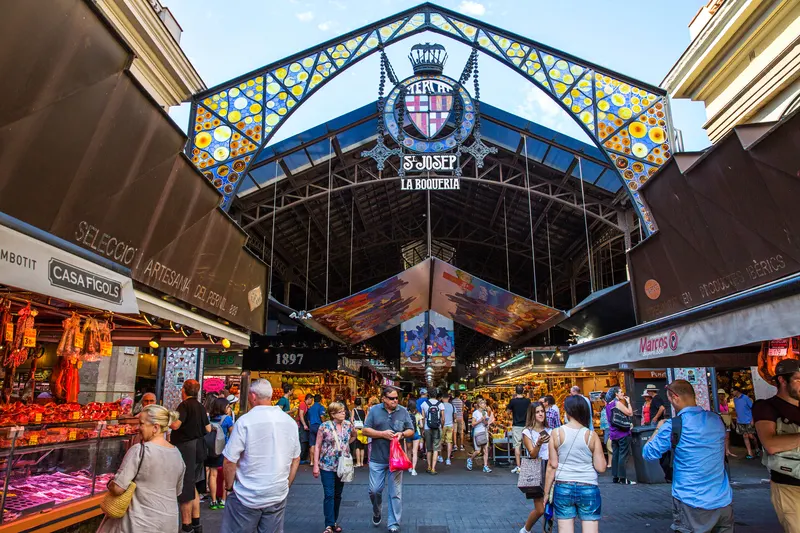
For a true taste of Barcelona, let’s enjoy dishes like paella and fideuà, both rich with seafood flavors.
The city’s Mediterranean coast provides the freshest ingredients, making each meal unforgettable. We also explored the historic Gothic Quarter, where traditional and modern eateries blend harmoniously, offering a culinary journey through time.
Lyon, France
In Lyon, we were at the heart of French cuisine. Known for its traditional bouchons, the city serves hearty dishes like quenelle and saucisson. Local markets brim with the freshest produce, cheeses, and meats, which was a true delight for our senses.
The city is celebrated as a gastronomic capital thanks to its innovative chefs who blend tradition with creativity.
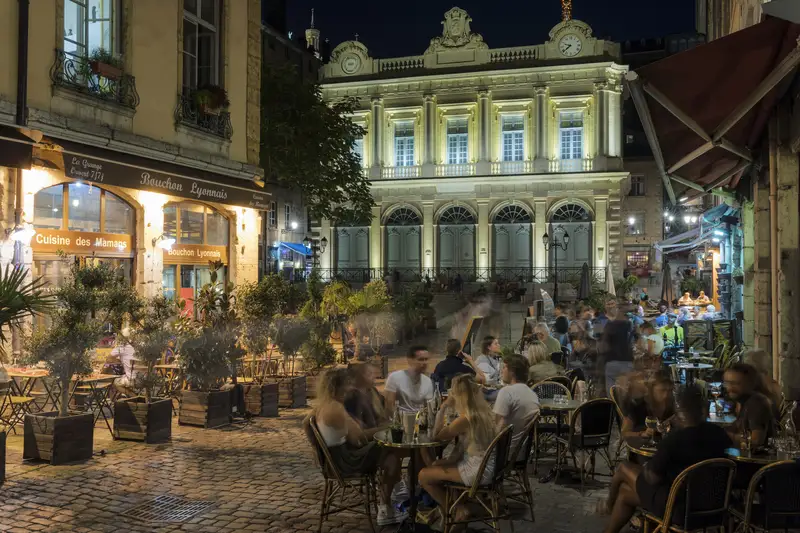
Let’s wander the cobblestone streets and explore top restaurants and small cafes alike, savoring the flavors that make Lyon a culinary jewel in Europe. Your journey here must include trying the decadent desserts and world-class wines that perfectly complement the city’s rich culinary heritage.
Bologna, Italy
As we ventured into Bologna, we were greeted by the rich aroma of Italian cuisine. Known as the food capital of Italy, Bologna’s proud culinary heritage is famous for its handmade pastas like tagliatelle al ragù and tortellini.
Walking through local markets, our senses were captivated by the fresh produce and premium cured meats such as mortadella.
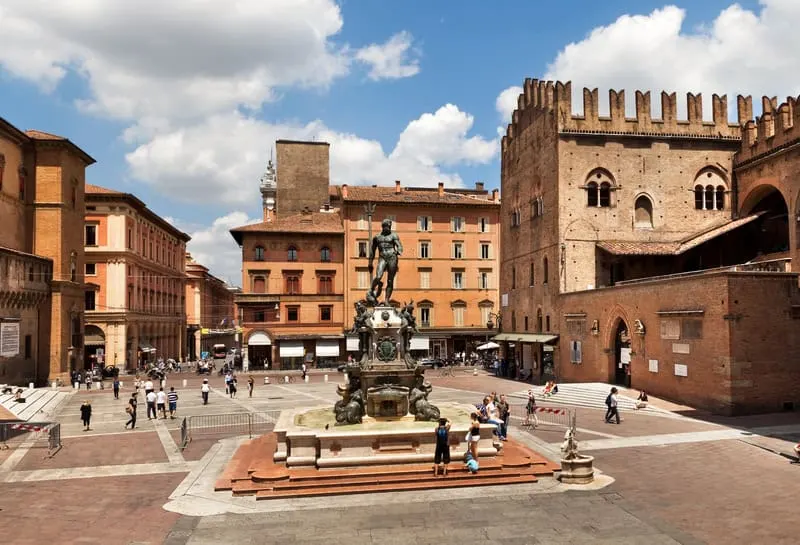
The city’s trattorias offer warm, inviting spaces to savor these regional dishes. The combination of rich sauces, aged cheeses, and fresh ingredients create a dining experience that stays with us. Each bite tells the story of Bologna’s commitment to high-quality, flavorful food that has been cherished for generations.
Hidden Gems off the Beaten Path
Exploring Europe in April offers the chance to visit less crowded destinations. The cities of Ljubljana, Tallinn, and Valletta provide unique experiences with their rich culture, history, and charming landscapes.
Ljubljana, Slovenia
Ljubljana is a city full of charm with its cobbled streets and green spaces. You can explore the historic Ljubljana Castle perched atop a hill, offering stunning views of the city. The vibrant Central Market allowed us to sample local produce and traditional Slovenian dishes.
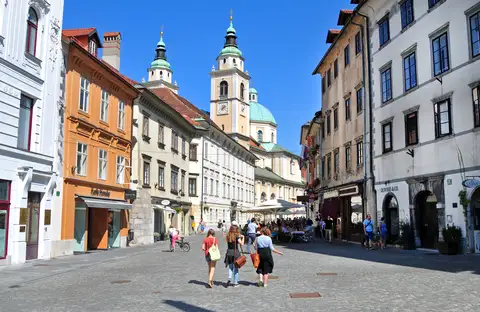
For art lovers, the Metelkova art center is a must-visit. This former army barracks has transformed into an independent socio-cultural center, showcasing contemporary art. Walking along the Ljubljanica River, you can enjoy the beauty of the Triple Bridge and Dragon Bridge, both iconic symbols of the city.
Tallinn, Estonia
Tallinn offers a blend of medieval and modern attractions. We found ourselves stepping back in time as we wandered through the Old Town, a UNESCO World Heritage Site. Its cobblestone streets, Gothic churches, and medieval buildings create a picturesque scene, perfect for history enthusiasts and photographers alike.
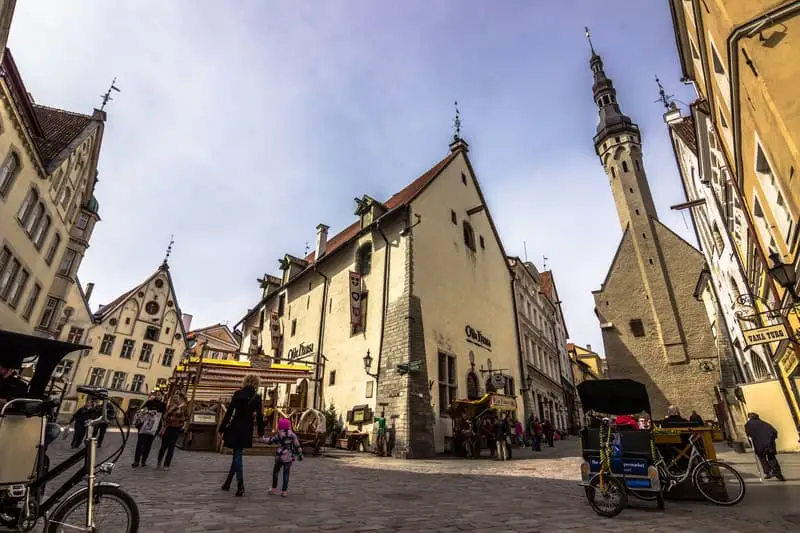
To experience contemporary culture, you can visit the Telliskivi Creative City. This area is filled with trendy cafes, boutiques, and art galleries. Tallinn’s seaside also offers a serene escape, with walking trails along the coast and views of the Baltic Sea. The city’s balance of history and modernity make it a captivating destination.
Valletta, Malta
Valletta, with its fortified walls and baroque architecture, is a city rich in history. You can explore the stunning St. John’s Co-Cathedral, known for its intricate interiors and exquisite Caravaggio paintings. The Upper Barrakka Gardens offer panoramic views of the Grand Harbour, an impressive sight to behold.

Strolling through the narrow streets of Valletta, we discovered charming cafes and boutique shops. For a unique experience, you can attend the Malta International Fireworks Festival, usually held in April. This festival lights up the skies with dazzling displays and is a highlight for visitors and locals alike. Valletta’s cultural vibrancy and historical significance make it a memorable destination.
Guide to Budget Travel in Europe
When traveling on a budget in Europe, our main goal was to maximize our experience while minimizing costs. Let’s explore some strategies to help you achieve this.
Transportation: Booking trains and flights in advance can often save you money. It’s also worth considering budget airlines or buses for shorter distances. Many cities have efficient public transport systems, making it easier to navigate without spending much.
Accommodation: Hostels and budget hotels are great options for affordable stays. You can also look for short-term apartment rentals, especially if you’re traveling in a group. Platforms like Airbnb often provide good deals in major cities.
Dining: Trying local street food or visiting supermarkets instead of dining out can significantly reduce expenses. Many European cities offer delicious but inexpensive food options. Preparing meals ourselves when we had kitchen access is another cost-effective approach.
Sightseeing: Researching free attractions and using city tourist cards for discounts or free entry to sites can enhance your travel experience. Museums often have free days or discounted entry, so checking schedules ahead is beneficial.
Seasonal Discounts: Traveling during the shoulder season, like April, is often less expensive and less crowded. Lisbon offers affordable accommodation and lovely weather in spring.
By planning wisely and staying conscious of your budget, you can enjoy the diverse cultures and landscapes Europe has to offer without breaking the bank.
Transportation Tips for European Travel
Traveling around Europe is an exciting adventure. We had lots of options to get from one place to another. Let’s explore some of the best ways to travel.
Trains are a popular choice. They are often fast and comfortable. We enjoyed scenic views as we traveled from city to city. In some countries, purchasing a rail pass can save you money.
For shorter distances or when schedules are tight, consider buses. They are often more affordable than trains and can connect you to smaller towns not served by rail. Booking tickets online in advance can also help you grab the best deals.
Flights can be a quick way to cover long distances. Europe has many budget airlines that provide reasonable rates. It’s important for you to check all fees, as extra charges can add up quickly.
Renting a car gives you flexibility. You can explore rural areas or take spontaneous detours. Remember, driving in Europe may require an International Driving Permit and adapting to different traffic laws.
Finally, let’s not forget about enjoying the local culture through walking and biking. Many cities have bike-sharing programs and pedestrian-friendly areas. You can experience the charm of each location up close.
Utilizing public transportation within cities, like buses and metros, is another great option. Many cities offer travel cards or apps that made it easy for us to get around.
By considering your options and planning ahead, you can have a smooth and enjoyable journey through Europe.
Accommodation Options for April Visits
When planning your April trip to Europe, finding the right place to stay is key. The choice often depends on your budget, preferences, and desired level of comfort. Let’s explore some of the accommodation options you can consider for your visit.
Hotels: Europe offers a wide range of hotels, from luxury to budget-friendly. Major cities like Vienna and Athens have well-known chains and boutique hotels that provide comfortable stays. Booking in advance may help you snag better deals and avoid last-minute price increases.
Bed & Breakfasts: If you seek a more personal touch, bed and breakfasts offer a cozy atmosphere. B&Bs often include homemade breakfast, providing you a local flavor. Cities like Budapest and Dubrovnik have many charming B&Bs that are worth considering.
Hostels: For those on a tight budget, hostels provide an affordable option. They offer shared and private rooms. Hostels are not just for young travelers; families and solo travelers are also welcome. Many hostels in cities like Athens are known for their lively social environments.
Vacation Rentals: Platforms like Airbnb allowed us to rent apartments or homes. This option provided us more space and a homey feel, perfect for families or longer stays. you can find rentals in beautiful cities such as Seville, offering convenience and comfort.
Camping: For a unique experience, you could try camping. Many countries offer campsites close to natural attractions, especially in areas like Slovenia. This choice lets you enjoy Europe’s stunning landscapes firsthand and embrace the outdoors.
